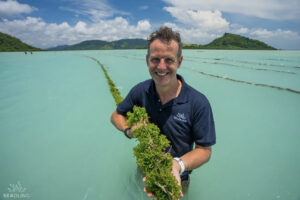It’s one of the top agricultural producers, as well as having one of the world’s most urbanized populations. It’s a high-tech society with a reputation for innovation; but is also the driest place on Earth, where water is a rare and precious commodity and bushfires are an almost yearly occurrence.
Given all this, you’d expect Australia to be leading the way in terms of controlled environment agriculture (CEA), making use of underutilized urban spaces — outdoors and indoors — to boost local production and enhance food security.
But the Lucky Country’s CEA scene is, surprisingly, on the small side. There are a bunch of reasons for that – including misconceptions about the nature of urban farming, risk-averse investors, and a disconnect between agritech entrepreneurs and the wide variety of other private and public stakeholders involved in urban development, says a new report from CEA consultancy and operator Blakthumb.
Blakthumb recently carried out a survey of Australian ‘built environment’ professionals — including architects, town planners, designers, and real estate developers — to identify the challenges and opportunities around the wider adoption of CEA in the country.
“Here in Australia, there’s a real lack of awareness about what CEA is. Even the people who build our cities don’t know much about it,” says co-founder and CEO Mel Fyfe. “So there’s an awareness and education piece needed. The reason we wanted to do this research was to understand,” Fyfe tells AFN. “There have to be reasons it hasn’t taken off here: Are people concerned about risk? Is there an attitudinal barrier?”
The Sydney-based CEA startup has adopted what it calls an “end-to-end, service delivery” model. Consulting with clients that want to integrate ag into their real estate or business, it handles all aspects of developing urban farms, from design and implementation through to harvesting and distributing produce. It thinks that a holistic approach such as its own can help to kickstart the country’s CEA sector.
Misconceptions, scant VC interest
The survey found that stakeholders tend to think of CEA in an urban context in terms of rooftop farms, ‘greening’ initiatives, or community growing spaces, rather than tech-enabled farms that can be built into cityscapes.
Blakthumb found that the capital-intensive nature of CEA, combined with Australia’s relatively small market, has meant much less VC interest in the segment Down Under as compared to the US. Other reasons for tepid VC activity include perceived “‘poor economics’ in fresh food [and] the desire to see startup firms focus on supply into existing supply chains, or the foodservice industry, rather than direct-to-consumer markets.”
This is despite the fact that existing supply chains are built around traditional agricultural practices and production, where many resources are spent on transporting food from the countryside where it’s grown — mostly in rural Queensland and Victoria — into urban areas where the bulk of the population resides, Blakthumb’s report says.
Coupled with the country’s recent experiences of Covid-19 movement restrictions and the devastating bushfire season, which started late last year, a “fundamental rethink and reshaping of the supply chain needs to occur to meet the more urbanised requirements of CEA,” the report adds.
By growing produce in cities and closer to end consumers, many transportation and storage requirements can be reduced or eliminated altogether, Blakthumb argues. The nutritional qualities and freshness of produce can also be better preserved, while urban growers can capture more value by selling directly to consumers or retailers.
Helicopter view
To achieve this — and to get prospective investors more excited about the space — closer collaboration between CEA entrepreneurs, built environment professionals, and government is required, the Blakthumb report suggests.
“What we need is more of helicopter view, because each state and each local government area has different rules,” Fyfe says. “We know there are spaces in urban areas that can integrate CEA into them. Really, it’s about having that planning pathway sorted out so that no matter where you are in Australia, you can integrate this.”
That means all parties working together to create spaces that can include agricultural activity, in a move beyond the small ‘pop-up’ urban farms that most of Blakthumb’s respondents typically associate with CEA to commercially viable and scalable farming operations.
Vertical farming is beginning to take off in South America, with Chile’s AgroUrbana banking $1 million in seed funding last week. Read all about it here
Advocates also need to teach these other stakeholders that there are myriad potential benefits to urban ag that go beyond shoring up our cities’ food security. Incorporating farming into Australia’s cityscapes doesn’t have to be difficult and can come with plenty of added value for society.
“CEA is generally a pretty low impact activity. There needs to be [more understanding that] it’s low impact and can be integrated quite easily,” Fyfe says.
“From a government perspective, there’s a real economic opportunity to commercialize these innovations and create jobs in urban communities – from highly-skilled, technical roles, to those that don’t require as much education but are still important and meaningful. As we recover out of Covid-19, that will be important – more urban jobs created, that are urban-based.”
What’s your view on the state of CEA in the land of Oz? Drop me a line at [email protected]

















Sponsored
International Fresh Produce Association launches year 3 of its produce accelerator